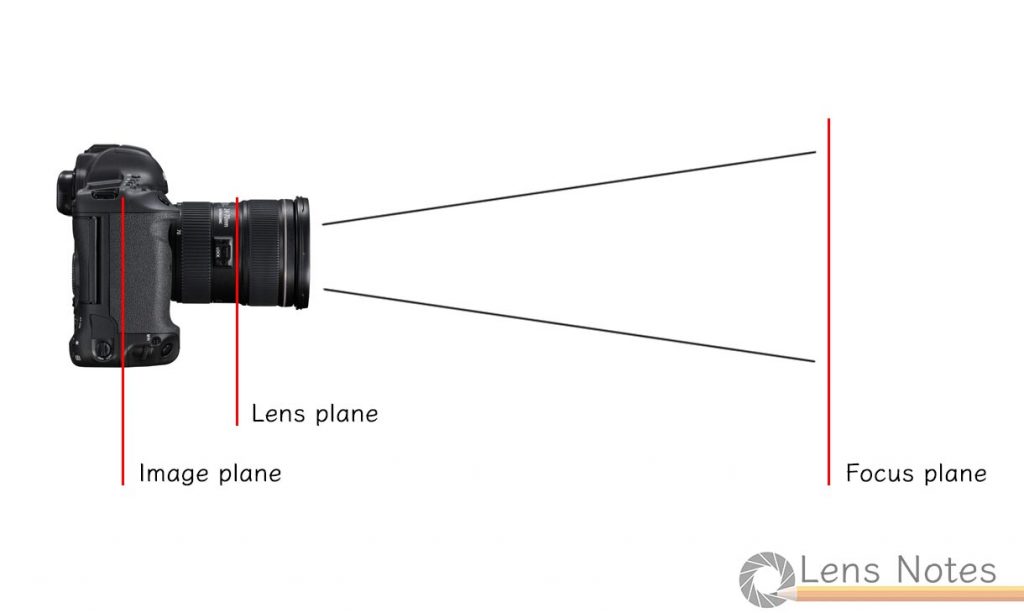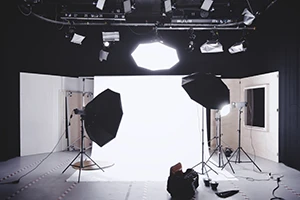
What is the scheimpflug principle?
The Scheimpflug principle is a geometric rule describing the relationships between the orientation of the lens and image planes and the plane of focus. The principle is named after Captain Theodor Scheimpflug of the Austrian army. Captain Schiempflug applied it in correcting perspective distortion in aerial photographs. Aside from photography, the principle is used in a number of scientific and medical applications, and is thoroughly documented. However, as with all scientific concepts, things can get very complicated very fast. Here we will only discuss what the Schiempflug principle means for photography. Put in one sentence, the photographic rendition of the rule is:
The image plane of sharpest focus passes through the line in which the film/sensor plane and lens plane intersect.
Clear enough? Didn’t think so! Lets get into the details!
What’s with all the planes?
As we describe how the Schiempflug principle works we will be talking a lot about planes, so lets define those first. There are three major planes in any camera: the image plane, the lens plane and the focus plane. The orientation between them and the subsequent effects on the image are what the Schiempflug principle is concerned with.

The image plane
The image plane is the plane upon which the lens projects the image. Generally, on the image plane lies the medium onto which the projected image is to be recorded. This is where the piece of film or the digital sensor in your camera lies. While focusing and composing a view camera, a ground glass is positioned at the image plane, allowing the projected image from the lens to be observed directly.
For most cameras, the image plane is fixed – in a DSLR, for example, the sensor is always going to be paralel to the lens mount. The only cameras that alow for image plane movement in relation to the lens mount are view cameras, like the Linhof Technika or specialist cameras like the Hasselblad Flexbody.
The lens plane
Compared to the image plane, which is (usually) an actual flat surface, the lens plane is more of an abstract concept. The lens plane is a virtual plane that typically lies on the optical center of the lens and is perpendicular to the lens axis. For most lenses the lens plane lies close to the aperture, but depending on the desing it may be in a different location.
The easiest way to visualize the lens plane is to place your lens front (or back) element down onto a table. The surface of the table is now parallel to the lens plane.
The focus plane
The focus plane or plane of sharpest focus is an even more abstract concept. It represents the plane of sharp focus within the photographed scene, the place where you would typically position the subject of your photograph.
What does this mean?
Normally in a camera, the lens and image planes are parallel to each other. In such configuration, the plane of focus is also parallel to them. What this means is that when your camera (respectivelly lens and image planes) is vertical, the focus plane will also be vertical. In the act of focusing you move this plane closer or further to the camera, but it always remains vertical. This might be a little confusing when we recall the wording of the Schiempflug principle:
The image plane of sharpest focus passes through the line in which the film/sensor plane and lens plane intersect.
In the abovementioned scenario, the planes of the lens, film/sensor and focus never intersect.
However, certain camera bodies, lenses or lens mount adapters allow for the angle between the lens and image planes to be adjusted. This adjustment is commonly known as tilt or swing, depending on the orientation. The Scheimpflug principle kicks in once the lens and image planes are not parallel.




